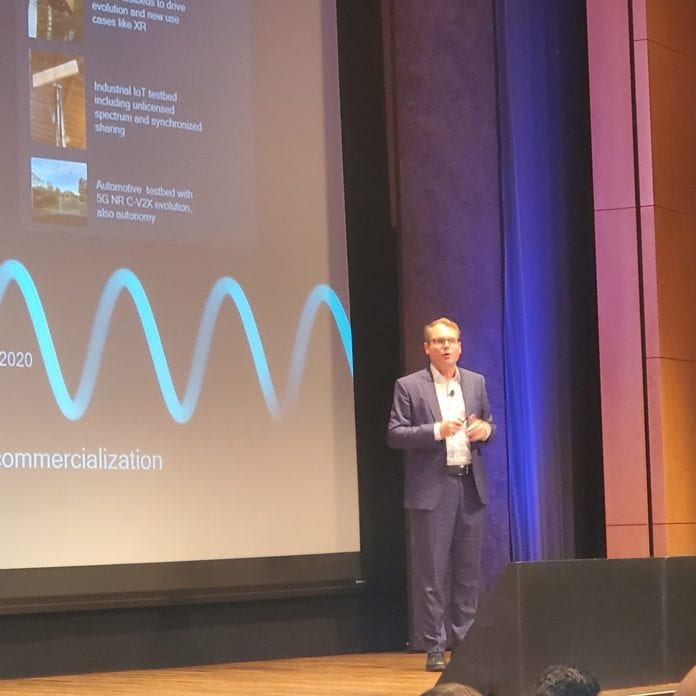Qualcomm sees 5G and AI as important adjacent technologies
SAN DIEGO–5G is about a lot of things that have a key commonality–the devices that connect to 5G will consume and create a lot of data of myriad profiles. Fortunately 5G is designed to handle all that data but people are not. Enter artificial intelligence, a rapidly developing set of tech that Qualcomm’s CTO Jim Thompson said “is going to have a much bigger impact at the edge of the network.”
Thompson and other company execs and communications staff, speaking throughout the Future of 5G workshop this week, called out “edge cloud” and on-device AI as key technologies to enabling both consumer and enterprise use cases.
5G, as compared to LTE, comes with massive reductions in network latency. If you’re a mobile gamer, this is for you. If you run a manufacturing plant, this is for you. But for this to be for you, there needs to be a concerted push of computing power out of the data center and closer to the end user. Without edge clouds, as Qualcomm described them, the latency gain wouldn’t matter because you’re connecting to a service at some remote location.
“If you think about where the data comes from that is consumed by AI,” Thompson said, “this comes from the edge of the network.” It’s worth noting that who exactly will build out the edge infrastructure is open–might be carriers, might be tower companies, might be new market entrants, probably will be a combination of all three.
John Smee, the company’s vice president of engineering, explored the intersection of 5G and AI, among other things, in a recent blog post.
“Today, we’re already enabling a wide range of power-efficient on-device AI inference use cases such as computer vision and voice recognition,” he wrote. “While AI is often considered to be cloud centric, we envision AI to become increasingly distributed in the future with lifelong on-device learning, bringing benefits like enhanced personalization and improved privacy protection.”
Smee continued, “The advanced capabilities of 5G make it ideal for playing the role of connecting distributed on-device AI engines and allowing them to be further augmented by the edge cloud — a concept we call the wireless edge.”
To the extent carrier trials indicate what they see as readily monetizeable use cases, Verizon has combined edge and 5G for automated facial recognition. This could be used for things like automating security at airports or access control for office complexes.
In a February statement describing the test, Verizon said, “The application was able to analyze information right at the edge of the network where the application was being used (instead of traversing multiple hops to the nearest centralized data center). As a result, the engineers were able to successfully identify the individual twice as fast as when they duplicated the experiment using the centralized data center. Putting the compute power closer to the user at the network edge greatly decreased the time to deliver the experience.”

